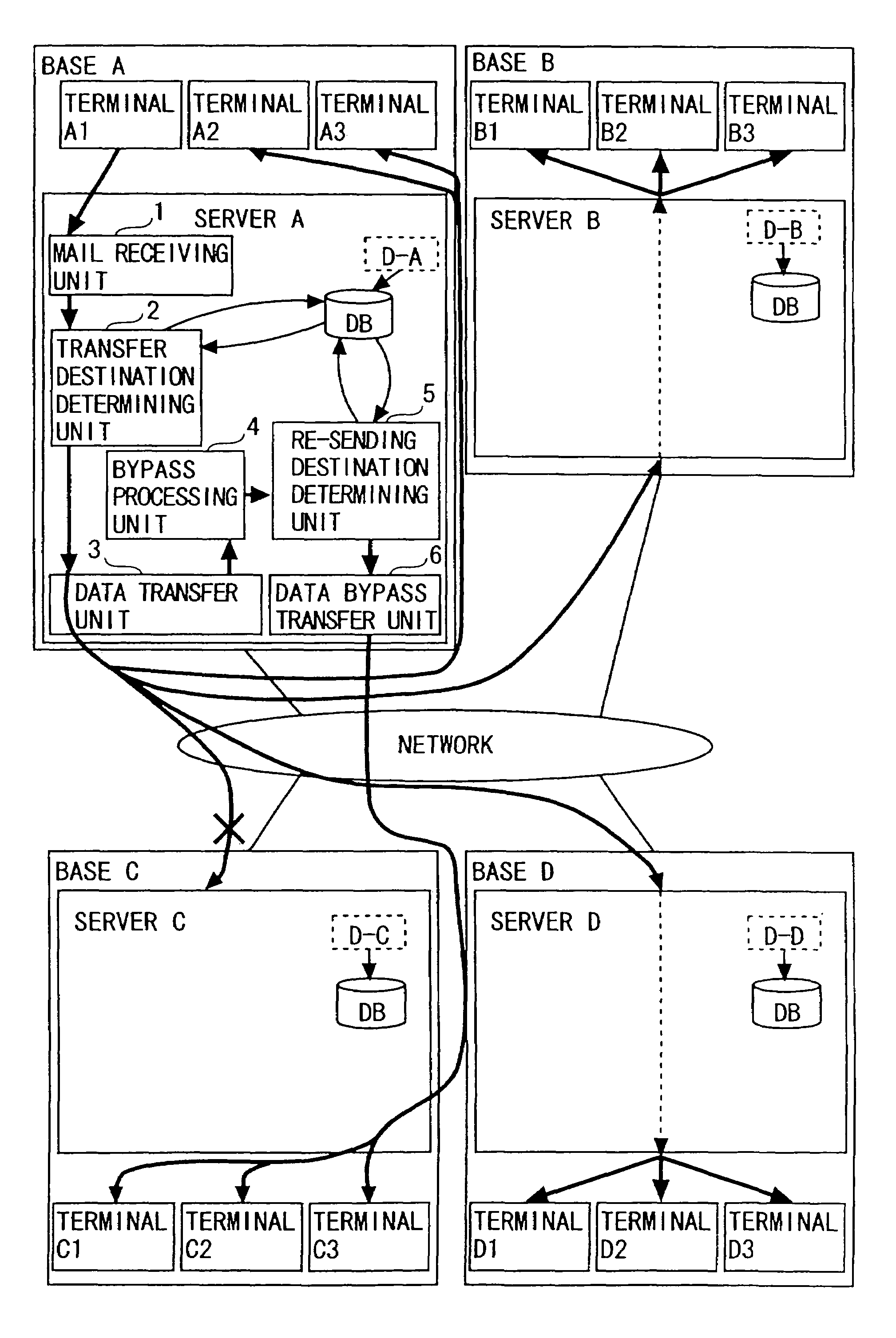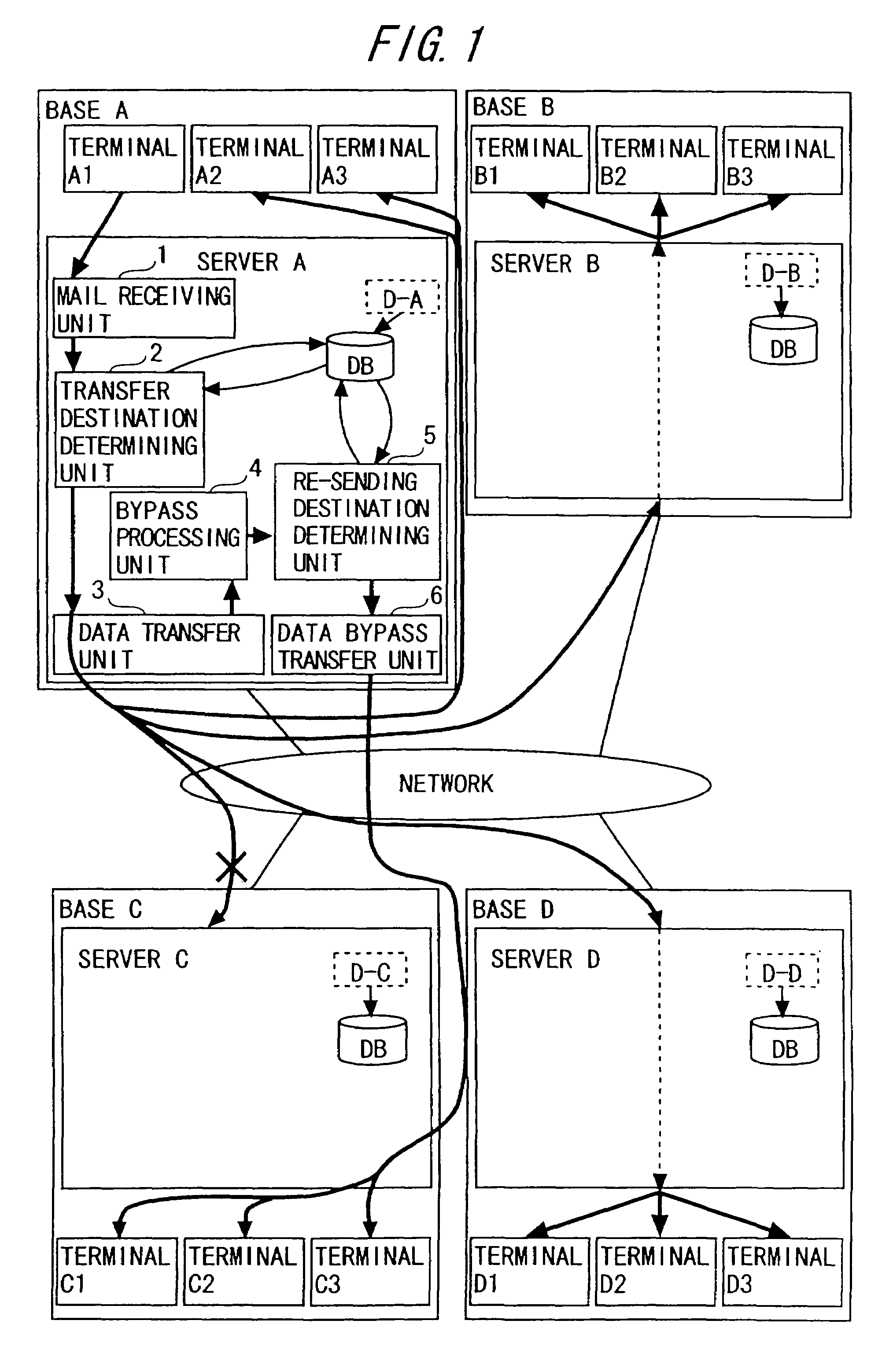Mailing list management system and electronic mail transmitting/receiving apparatus
- Summary
- Abstract
- Description
- Claims
- Application Information
AI Technical Summary
Benefits of technology
Problems solved by technology
Method used
Image
Examples
Embodiment Construction
[0031]Embodiments of the invention will hereinafter be described by use of the drawings.
[0032]FIG. 1 is a view of architecture, showing a mailing list management system of the invention.
[0033]In the same Figure, servers A˜D are electronic mailing list management servers and also serve as relay servers.
[0034]Each server is constructed of a mail receiving unit 1 for receiving an Electronic mail from a terminal device, a transfer destination determining unit 2 for determining a transfer destination of the Electronic mail, a data transfer unit 3 for transferring the Electronic mail to the transfer destination via a network, a bypass processing unit 4 starting a bypass process when an error occurs in the data transfer, a re-sending destination determining unit 5 for searching for an address of a bypass destination from a database and setting it, and a data bypass-transfer unit 6 for bypass-transferring the Electronic mail. Then, the transfer destination determining unit 2 and the re-send...
PUM
 Login to View More
Login to View More Abstract
Description
Claims
Application Information
 Login to View More
Login to View More - R&D
- Intellectual Property
- Life Sciences
- Materials
- Tech Scout
- Unparalleled Data Quality
- Higher Quality Content
- 60% Fewer Hallucinations
Browse by: Latest US Patents, China's latest patents, Technical Efficacy Thesaurus, Application Domain, Technology Topic, Popular Technical Reports.
© 2025 PatSnap. All rights reserved.Legal|Privacy policy|Modern Slavery Act Transparency Statement|Sitemap|About US| Contact US: help@patsnap.com



